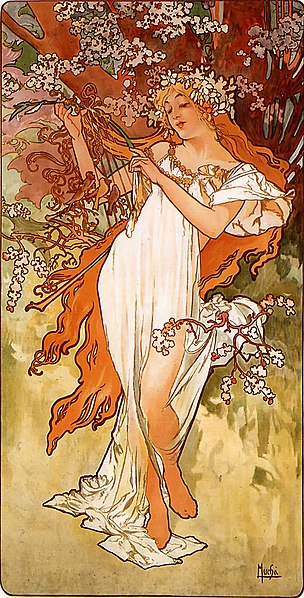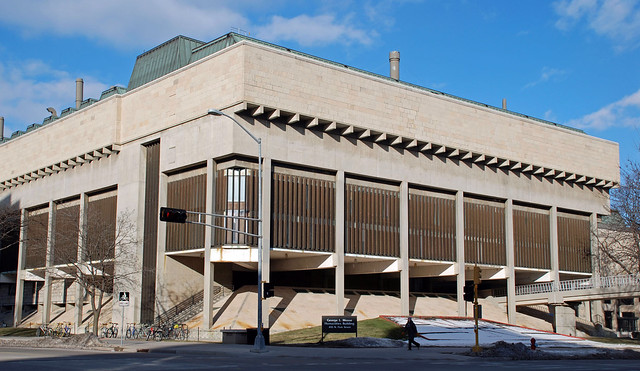trader/warrior
Deity
I really hate the "giant branded box" look of big suburban department store chains and the like.



I'm beginning to wonder if anyone on this forum actually knows what "modernist" means.
This:I'm beginning to wonder if anyone on this forum actually knows what "modernist" means.

I'm beginning to wonder if anyone on this forum actually knows what "modernist" means.
I'm beginning to wonder if anyone on this forum actually knows what "modernist" means.
"Free from tradition"
That's the best I could come up with; I notice modernist buildings aren't built on any tradition, and instead are built on a set of abstract principles independent of the culture and nature of the locality wherever its built, so that many modernist buildings resemble each other in one way or another, even if they were conceived completely independently without any influence coming from one way or more.
To sum up
Traditional->form follow meaning
Modernist-> form follow function
postmodern-> form follow fun
I think I've said this before, but I think that's the most ugly thing a building can be. Buildings don't go in art galleries, they are firmly rooted in place, and have to be judged by their background.
That, for example is the only objection I can make of Owen's appraisal of the Olympic Tower. Taken in isolation, it's beautiful and interesting. I agree with him very much that it "feels like something out of a sci-fi novel." The only problem is that it's not, it's stuck next to the Olympic Stadium, in London. And so the beautiful red structure strikes me as nothing more than an unfinished scaffolding or piece of construction equipment like in the picture of mecca, at first glance. And that impression sticks with the viewer.
I disagree with you that the wide base is necessarily a problem, though. I think it's one of the nicest things about Abraj Al Bait. It feels like a building designed by aesthetic standards, rather then the constraints of real estate that are forcing you to build upwards. If anything, a single giant tower would look even more embarrassingly phallic. This at least looks like a manmade mountain.
To highlight how good it could have been, and how important place is, we can compare Abraj Al Bait to Moscow State University.

Not as big, but an incredibly imposing building. But They built it 5 kms from the city center, with space for it to belong to. The Abrag Al Bait doesn't belong to the space, it simply dominates it through brute force. The fact that it is place directly next to the Grand Mosque, which the entire city is built around, and is quite low and flat, almost makes it look like it's built in direct defiance of the city around it.
So for me at least, place is just about everything with a building.



Kaiserguard said:Really nice, thank you.
I do note that Postmodern architecture - while opposed to the ideas behind Modernism itself - does consider Modernist architecture to be yet another source of inspiration alongside traditional styles.
 that's true, I think the unique part of posmodernism is also how it is lax with the sense of time. So yes it can present both the traditional and modern art simultaneously, or just simply refer or borrow some of its aspect, because postmodern art doesn't border itself in expression, if I remember correctly reading about it long long time ago.
that's true, I think the unique part of posmodernism is also how it is lax with the sense of time. So yes it can present both the traditional and modern art simultaneously, or just simply refer or borrow some of its aspect, because postmodern art doesn't border itself in expression, if I remember correctly reading about it long long time ago.



A plucky little demolition crew should remove this monstrous clock thing:



I think that whoever lives in that building is likely turning to a serial killer :O


That's really modern in the sense of epoch rather than principle, though, modernity rather than modernism. Modernism as a movement within architecture was concerned with rationality rather than simple distance from tradition, with the basically very humanistic principle that buildings are "machines for living in". It was more than just concrete-and-corners, which seems to be the sum of its characteristics so far as CFC is concerned."Free from tradition"
That's the best I could come up with; I notice modernist buildings aren't built on any tradition, and instead are built on a set of abstract principles independent of the culture and nature of the locality wherever its built, so that many modernist buildings resemble each other in one way or another, even if they were conceived completely independently without any influence coming from one way or more.
That's really modern in the sense of epoch rather than principle, though, modernity rather than modernism. Modernism as a movement within architecture was concerned with rationality rather than simple distance from tradition, with the basically very humanistic principle that buildings are "machines for living in". It was more than just concrete-and-corners, which seems to be the sum of its characteristics so far as CFC is concerned.
